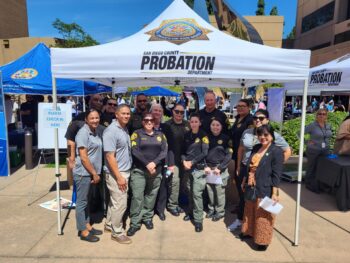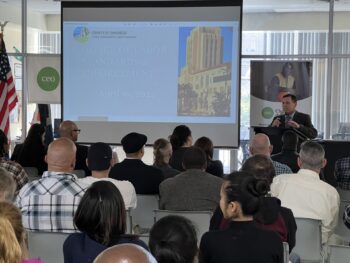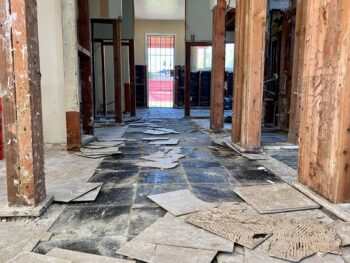Ask our Sheriff’s Regional Crime Lab employees, “So is it just like CSI here?” and they tend to laugh.
Behind the walls of an anonymous industrial building in Clairemont Mesa, County criminalists haven’t the luxury of chasing only the high-profile, weird whodunits. Each year, they process evidence for thousands of cases and all types of crime. With so many cases, each with multiple pieces of evidence, the lab rarely cracks the crime in a day or two, like they do on TV.
And the endless paperwork that necessarily accompanies each evidence analysis? TV leaves that out.
While reality doesn’t normally match the heart-racing atmosphere of CSI, our crime lab employees still have plenty of stories. Their precise work is essential to justice; their techniques do coax suspects’ names from mute objects.
And if lives are in danger, the lab can get pretty CSI-like. When searchers looking for Chelsea King on the banks of Lake Hodges discovered her garments, our lab, working with the state’s Department of Justice, followed an emergency protocol that allowed our lab to check a male DNA profile against the state’s DNA database within a day. The DNA profile had been derived from a clothing item of Chelsea’s left at the crime scene. The hope was that identifying a suspect right away might lead searchers to Chelsea alive.
Unfortunately, that was not to be. But the DNA did link a sex offender named John Gardner to the crime and allow deputies to arrest him quickly.
Our lab serves the Sheriff’s Department and every police agency in the region, with the exception of the San Diego Police Department, which operates its own lab. On any given day, we might get fingerprints from a burglarized house in El Cajon or a knife ditched in a bush during a police chase in National City.
Last year, the lab processed more than 13,000 “requests,” most involving multiple pieces of evidence.
The lab is broken into seven major parts, including the Firearms Section, which analyzes bullets and guns, the Latent Print Unit, which finds and analyzes fingerprints, and the Forensic Biology Section, which collects and analyzes DNA evidence.
Lab Director Mike Grubb has worked in the field 36 years. He says the advent of DNA analysis in forensic science about 20 years ago dramatically elevated the crime lab’s importance to police.
And it’s no wonder the technique has inspired more than one CSI episode. DNA isn’t even visible at a crime scene, but it can become the most important clue.
In recent years, techniques for collecting and replicating DNA have improved so that many trace bodily materials—hair, saliva, blood, semen, skin, sweat or mucus—yield usable evidence. Our criminalists talk about collecting “touch DNA” from objects that might contain a few shed skin cells.
Six years ago, our crime lab analyzed DNA almost exclusively for homicide or rape investigations, using blood or semen as evidence. In those days, DNA evidence was most useful for definitively linking an already-known suspect to a crime.
That kind of investigation is still relevant. But these days, DNA is also collected from all kinds of crime scenes, including break-ins, robberies, auto thefts and non-fatal crimes of violence, and our Forensic Biology section is busier. In 2005, the lab processed 386 requests for DNA analysis; in 2011, it processed 1,135.
DNA evidence is considered in more crimes partly because of the improved techniques for collecting and using it. And an ever-expanding database of criminal DNA profiles means DNA evidence, like fingerprints, can now produce the name of a suspect that detectives might never have identified otherwise.
California voters in 2004 passed Proposition 69, which mandated the collection of DNA from everyone arrested for a felony. The state’s database now has about 1.8 million DNA profiles.
Criminalist Shelley Webster says last year our crime lab identified more than 300 suspects through matches with database profiles.
After DNA evidence is collected from a crime scene, Webster and other lab criminalists use specialized laboratory equipment to extract, purify, quantify, replicate, and interpret areas of DNA. Each DNA profile actually describes the sequence of 16 particular segments of DNA.
The likelihood that any two people, besides identical twins, will have the same genetic pattern in each of these segments is about 1 in 400 trillion, according to the FBI.
After our lab processes DNA and develops a genetic profile, we send it via computer to the state Department of Justice, which checks the profile against the State DNA database. Every week, profiles we’ve uploaded to the State DNA database are sent to the national DNA database to check for hits against suspects in other states.
After several weeks, the Department of Justice will notify our lab if there appears to be a match. Our criminalist checks the state’s offering against our own original profile. Once we confirm the DNA match, the Department of Justice provides a name.
The protocol helps ensure accuracy, privacy, and a fair and orderly response to labs and cases throughout the state.
But as you can see, the usual procedure is far from instantaneous. However, as in the Chelsea King case, the protocol can change in an emergency.
Another emergency DNA analysis came this spring, when a University of San Diego student was shot while driving on Highway 163 and a second car was struck by a bullet. The California Highway Patrol closed the freeway and recovered fired cartridge cases.
Our crime lab harvested small amounts of DNA from the cases. With a random shooter on the loose, our lab worked with the Department of Justice to move fast. Within a couple days, our lab had a match, and a name, of a 58-year-old man who lived in a motor home near the 163 freeway.
His DNA was in the Department of Justice database because he’d been arrested for throwing rocks at cars on the same freeway weeks earlier.
The suspect has been charged with assault with a deadly weapon and other crimes. He is scheduled for trial next month.
Cases like this make the job fascinating and just as thrilling as fiction, says Criminalist Shelley Webster.
“We get excited when some of our biggest cases get a name,” she said. “It’s really exciting.”
Director Grubb expresses similar feelings, even after his long career.
“Many on our staff here at the Crime Lab weren’t even born when I started in the profession,” he said. “I really enjoy seeing in their faces the same excitement I have had for this work all these years.”




